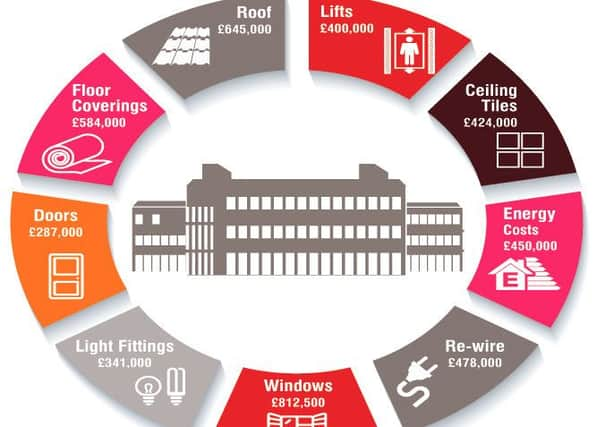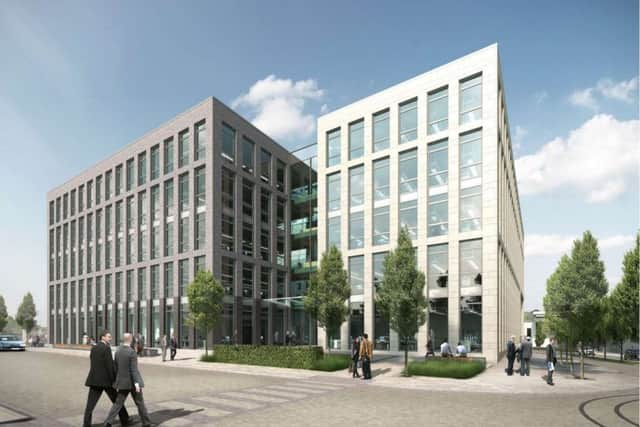Reiterating the case for new council HQ


It comes after the capital funding for the project was approved as part of the council’s budget and medium-term financial plan in February, while the planning application was given the go-ahead on Tuesday.
The project has provoked an extremely critical backlash, particularly from political opponents of the council’s Labour administration, the community in Morpeth and residents of the more rural areas of Northumberland.
Advertisement
Hide AdAdvertisement
Hide Ad

Last month, we reported that an audit carried out by Ernst & Young found that the value-for-money case for the new building is sound.
Nonetheless, opposition councillors still have a number of concerns with Morpeth Kirkhill ward member, Andrew Tebbutt, describing the report as a ‘whitewash’.
Meanwhile, Conservative group leader, Peter Jackson, says there are questions that still have not been answered, which he raised in an open letter to the council’s chief executive.
Here, the council responds to some of the key criticisms and answers some of the questions about why a new headquarters in Ashington is the best option:


Moving to a new County Hall will cost us millions.
Advertisement
Hide AdAdvertisement
Hide AdThis is an invest-to-save proposal. Yes it will involve spending money, but the overall cost to the council over the next 25 years of a new build in Ashington is £38.54million, compared to the £54.25million it would cost us to stay at County Hall in Morpeth (a saving of £630,000 a year) – in a building which has had years of under-investment.
The current County Hall building is in a reasonable condition.
Since it opened in 1982, the building has suffered years of no or very little investment and now needs millions spent to bring it up to the standards expected of a 21st-century office building.


It is expensive to run and needs significant investment to make it fit-for-purpose.
The move will only benefit Ashington.
Advertisement
Hide AdAdvertisement
Hide AdThese proposals for a new HQ are only one part of a much wider regeneration strategy, to encourage growth in all market towns.
Across Northumberland, we are putting services under one roof – making it easier for residents to contact us, while helping protect vital frontline services.


The overall programme is ultimately aimed at generating about £369million into the regional economy.
Could you provide more details about the type of costs which make up the £21.25million figure to bring the current County Hall up to standard?
Advertisement
Hide AdAdvertisement
Hide AdThe £21.25million consists of: £12.38million – remodelling and refurbishment cost (including stripping out existing engineering services and internal walls; repairs to roof, external walls and car-parking areas; window replacement; new engineering services; internal partition walls; floor coverings, ceilings and decoration); £4.73million – fit-out cost (furniture, fittings and equipment); £1.86million – construction inflation between the point of estimation to undertaking a tender exercise; £2.28million – contingency for design omissions and unknowns.
How much will the energy costs vary between the current building and the new building?
The original GVA report estimated the annual utility costs as £360,000 at the existing County Hall compared to £250,000 at the new HQ –30 per cent less a year.
In terms of the market-town strategy, how many more staff and which extra services would be available to the public in towns such as Alnwick?
Advertisement
Hide AdAdvertisement
Hide AdAt this stage, there are no details about the numbers of staff who would be working from Alnwick in the future.
In terms of services, we want to ensure the public can still access the same services they enjoy now, but perhaps some services will be located in one building rather than being in different offices.
For example, it makes sense if people can access library services while at the same time paying their bills or getting information about other council services. The actual detail of what services are based where are still to be finalised.
The aim, as for all the market towns, is that staff will be able to work more flexibly, so, they could drop into an office in the town rather than have to travel to County Hall to access a computer or take part in a meeting.
Advertisement
Hide AdAdvertisement
Hide AdIn the future, work will become something staff do, rather than where they do it. Actual numbers of staff will be worked out in due course.
Why was Ashington selected and a new-build in Morpeth or any other towns not considered?
Alternative locations for new county council headquarters were investigated.
A town-centre location offers better opportunities to use public transport, reduce carbon usage and the reliance on private vehicles. It also helps sustain town centres.
Advertisement
Hide AdAdvertisement
Hide AdA total of 47 per cent of the population of Northumberland are in the south-east and 43 per cent of council employees based at County Hall live in the south-east of the county.
Of the town centres in the south-east, only Ashington and Blyth have potential town-centre sites that are large enough to provide the size of office accommodation required.
Arch developed an investment plan for Ashington on behalf of the council to deliver regeneration and attract public and private investment. The focus was the redevelopment of the North East Quarter of the town centre.
There was scope within this for major office development with the potential to accommodate more than 1,500 workers and the policy board identified Ashington as the preferred location for a new council headquarters.
Advertisement
Hide AdAdvertisement
Hide AdWhy can’t the money for the new building be spent fixing potholes or avoiding the fire-service cuts?
The money that is being spent on the new building couldn’t be spent on areas such as fixing potholes or avoiding the fire-service cuts.
That is because the new HQ build will be financed through long-term capital-investment money – that’s used for buying new equipment and buildings.
It legally cannot be used to offset the significant cuts on revenue budgets that are being imposed on us from central government.